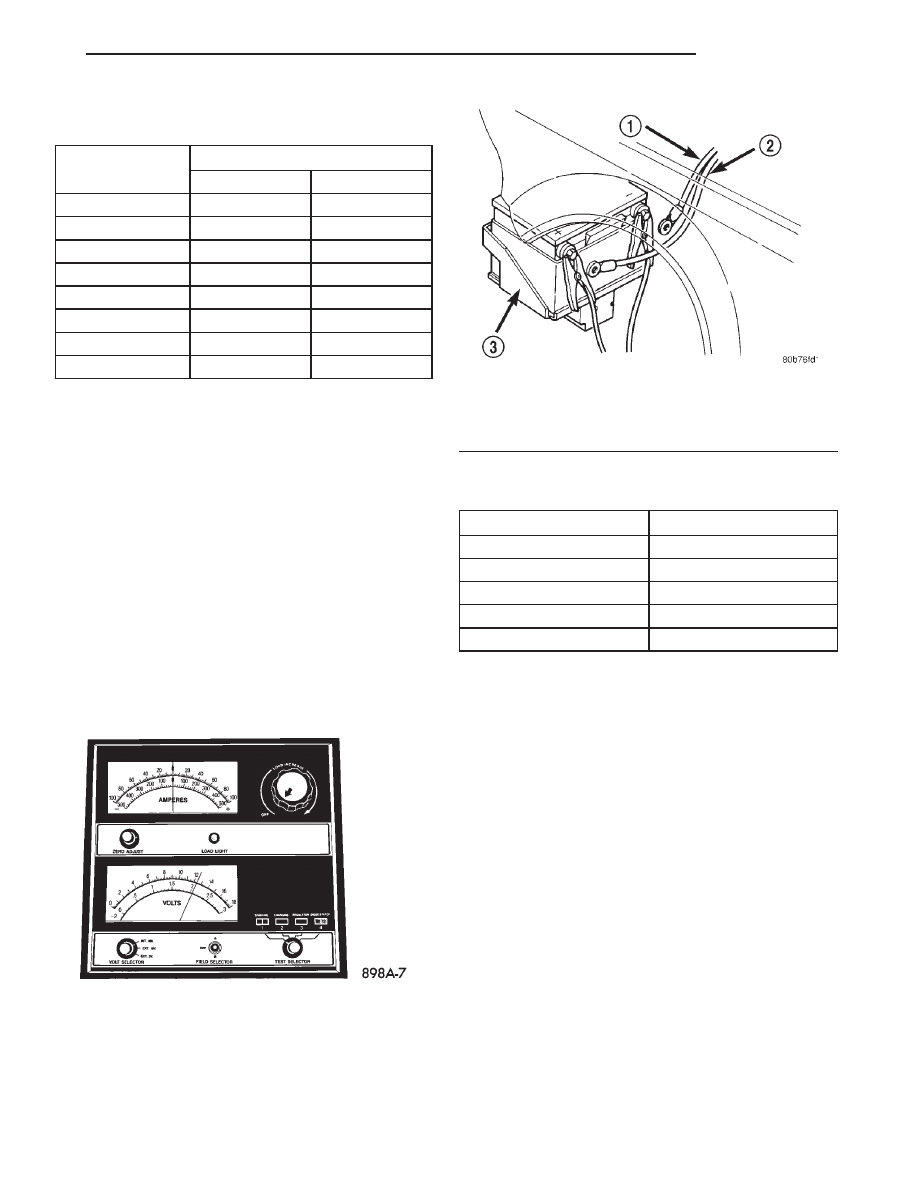Chrysler Stratus Convertible. Manual - part 228

BATTERY OPEN CIRCUIT VOLTAGE TEST
An open circuit voltage no load test shows the
state of charge of a battery and whether it is ready
for a load test at 50 percent of the battery’s cold
crank rating. Refer to Battery Load Test. If a battery
has open circuit voltage reading of 12.4 volts or
greater, and will not pass the load test, replace the
battery because it is defective. To test open circuit
voltage, perform the following operation.
(1) Remove both battery cables, negative cable
first. Connect a Volt/Ammeter/Load tester (Fig. 8) to
the battery posts (Fig. 9).
(2) Allow the battery to stabilize for 2 minutes,
and then verify the open circuit voltage. Refer to Bat-
tery Open Circuit Voltage table.
(3) This voltage reading will approximate the state
of charge of the battery. It will not reveal battery
cranking capacity.
IGNITION OFF DRAW TESTS (IOD)
High battery current draw when the ignition
switch in the off position will discharge a battery.
After a dead battery is serviced, the vehicle Ignition
Off Draw (IOD) should be checked. To determine if a
high current draw condition exists, check the vehicle
with a Digital multimeter that has an ammeter
range from at least 10 amps down to 10 milliamps
(30) milliamps is allowable.
(1) Verify all electrical accessories are OFF:
• Remove key from ignition switch
• Turn off all lamps
• Trunk compartment lamp is disconnected or
removed
• Glove box lamp goes off when the door is closed
• All doors are closed
• Sun visor vanity lamps are OFF
(2) Disconnect battery negative remote cable.
CAUTION: Do not operate any accessory that has a
greater draw than the ammeter can measure.
BATTERY LOAD TEMPERATURE TABLE
Minimum Voltage
Temperature
°F
°C
9.6 volts
70° and above
21° and above
9.5 volts
60°
16°
9.4 volts
50°
10°
9.3 volts
40°
4°
9.1 volts
30°
-1°
8.9 volts
20°
-7°
8.7 volts
10°
-12°
8.5 volts
0°
-18°
Fig. 8 Testing Open Circuit Voltage
Fig. 9 Volt-Ammeter Load Tester Connections
1 – BATTERY NEGATIVE CABLE
2 – BATTERY POSITIVE CABLE
3 – BATTERY
BATTERY OPEN CIRCUIT VOLTAGE
Open Circuit Volts
Charge Percentage
11.7 volts or less
0%
12.0 volts
25%
12.2 volts
50%
12.4 volts
75%
12.6 volts or more
100%
JX
BATTERY
8A - 5
DIAGNOSIS AND TESTING (Continued)